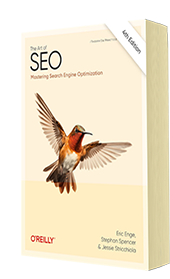What is Flickr and why should I care?
What is Flickr?
Until recently, I defined Flickr simply as a free service for bloggers who wish to post photos, not only on their blog but also on the Flickr service for other Flickr users to peruse, vote on, add to their favorites list, etc. Flickr even supports RSS feeds, with ability to add comments and notes to photos. You can of course use Flickr to share your family photos and snapshots with friends and relatives. And amateur photographers can show off their work. On Flickr, the photographic “creme” rises to the top, due to other Flickr users who make comments, post blog entries, and cause the photos to achieve recognition in “most popular” lists.
But now I’ve come to realize that Flickr is so much more. It’s not just a cleverly designed web application. It’s a repository of human knowledge and creativity organized organically. It’s a visual conversation. It’s countless stories intertwined. It’s a community. It’s a virtual world. It’s a massively multiplayer online role-playing game.
The folks at Flickr describe Flickr as a place where you can:
- Organize your photos in a meaningful way
- Share your photos and stay in touch with your friends and family
- Form a group for a wedding, reunion and event
- Find beautiful, cool or intriguing photos
- And much, much more
The “much, much more” part was what really surprised me and what I’m only now beginning to appreciate. Like a fractal, there are layers upon layers of complexity in Flickr. In order to uncover those layers and truly appreciate the service, you really need to spend adequate time using it. A quick stroll through just doesn’t cut it.
The comparison of Flickr to a massively multiplayer online role-playing game by Antenna was a bit of a revelation for me. At the core, THAT is the secret to its success. As Antenna explained:
Why does this make flickr successful where Friendster, Orkut, et al fall flat? I believe it?Ä´s because flickr?Ä´s designers are among the first (I can?Ä´t think of others but they surely exist) who have grokked video game design and (more to the point) figured out how to translate it to the web. What does this mean? It means that, unlike say Zoto, which is just a tool for storing and sharing photos, flickr is inherently, down-to-its-bones about play. If you look at a list of the elements of a successful game, they are all present in flickr: a sense of space to explore, a range of challenges, a range of abilities which can succeed, the need for preparation and skill, a variable feedback system.
And how is Flickr a “conversation”? A recent article in Salon.com (The Friendster of Photo Sites“) explains:
…”It’s a two-way conversation, because you’re not just posting for someone to see them. You’re posting them so they can participate in them with comments and notes.”….While comments are much like comments on a blog, notes annotate the images themselves with boxes that show text when a cursor scrolls over them, like this.
The same article describes how a “folksonomy” (informal social categories) has emerged on Flickr thanks to Flickr’s elegant “tagging” system:
As members of Flickr post their photos, they attach “tags” to them. Any word or series of words smooshed together, in any language, can be a tag, like “sleeping” or “red” or “nighttime.” Your tag then connects your images to any other members’ photos that happen to share the same tag…. “In information architecture, you’re always trying to marry the bottom up and the top down. The bottom up is how people normally talk about things, sort of the vernacular,” he says. “If a person is trying to describe it for a group of their friends, or if they want to remember something themselves, what would they call it?” There are tags for collections and clouds, but also for satire and creepychristmas.
The result is a commingling of images that no team of Web designers or usability experts could dream up on their own, which produces intriguing juxtapositions — sometimes clearly intentional, other times entirely fortuitous. On the sleeping tag, drunks sleep it off next to slumbering babies and cats. The RNC tag sports both photos of protests of the Republican National Convention last September in New York, and photos from the conference floor. The Hummer tag links up shots of the vehicle performing extraordinary feats of vehicular machismo as well as shots of Hummer-haters giving the finger to the gas-guzzling vehicle. And then there’s an entire tag, fuh2, devoted to dissing the Hummer with the one-fingered salute.
If a message board or chat room is one version of online community, here the tags themselves create all kinds of cross-referencing and interlinking that brings people — and their work — together in conversation, riffing on each other’s visual ideas with their own images, making comments and notes.
Yet, the most popular tags on the site are so inclusive that they can feel almost meaningless, like 2004, camera phone and photo. Though there’s a check on that, as other people can come in and add another layer of detail — dog, cat, cloud, creepychristmas. So, the crowd can organize the system in ways that even the photographer might not expect or anticipate. In other words, “People in your friends group can add their own tags to it, so it makes it a bit richer,” explains Vander Wal.
The end result is: “It’s capturing more of what is actually human rather than a machine structure where everything is formalized,” he says. And that means members using the system come together and share their visual ideas in endlessly unexpected ways. Some even hold whole conversations strictly in pictures, or turn a mere recipe for spiced banana cake or apple cake into something that looks truly new.
Certainly Flickr is doing something right: the site already has 182,000 members and is growing at 7% a week. There are 2.2 million photos there and that number?Ä´s growing at the rate of about 30,000 a day. 82% of the photos are publicly available to anyone.
Why should you care about Flickr?
Flickr represents the future of the conversational Internet. Static, passive web sites are passe. Your website should aspire to become a living, breathing online organism that morphs into something new as its human cohabitants interact with it, like Flickr does. Such is how I’d expect a “successful” business website to be defined — in the year 2010.

Chapter 6:
Keyword Research
From the fundamentals of link building to the nuances of natural linking patterns, virality, and authority.
Related Posts

Embrace Journaling, Tackle Tardiness, and Explore Our Energetic Echo
Here’s what I found inspirational, challenging, or just downright hilarious this week. What caught your eye? And, remember to check out this week’s great podcast episodes: Scaling a SaaS Company with Jason Morehouse “A crucial factor to business success is to find and take the personal path that works best for you.” — Jason Morehouse […]
Read More
Harrison’s harmony, conquering a blank canvas, & gut health hacks
Here’s what I found inspirational, challenging, or just downright hilarious this week. What caught your eye? And, remember to check out this week’s great podcast episodes: Be a Sales Game Changer with Fred Diamond “True elite sales professionals develop a dedicated mindset, proactive client interaction, and continuous self-preparation. They understand their client’s needs and enable […]
Read More
Rebirth of sleeper trains, 4,000 weeks is a long/short time, and golden age for medicine
Here’s what I found inspirational, challenging, or just downright hilarious this week. What caught your eye? And, remember to check out this week’s great podcast episodes: A Story Worth Retelling with Luke Storey “Aligned values are the cornerstone of successful partnerships, whether in business or life, as they shape our moral code, define our priorities, […]
Read More
